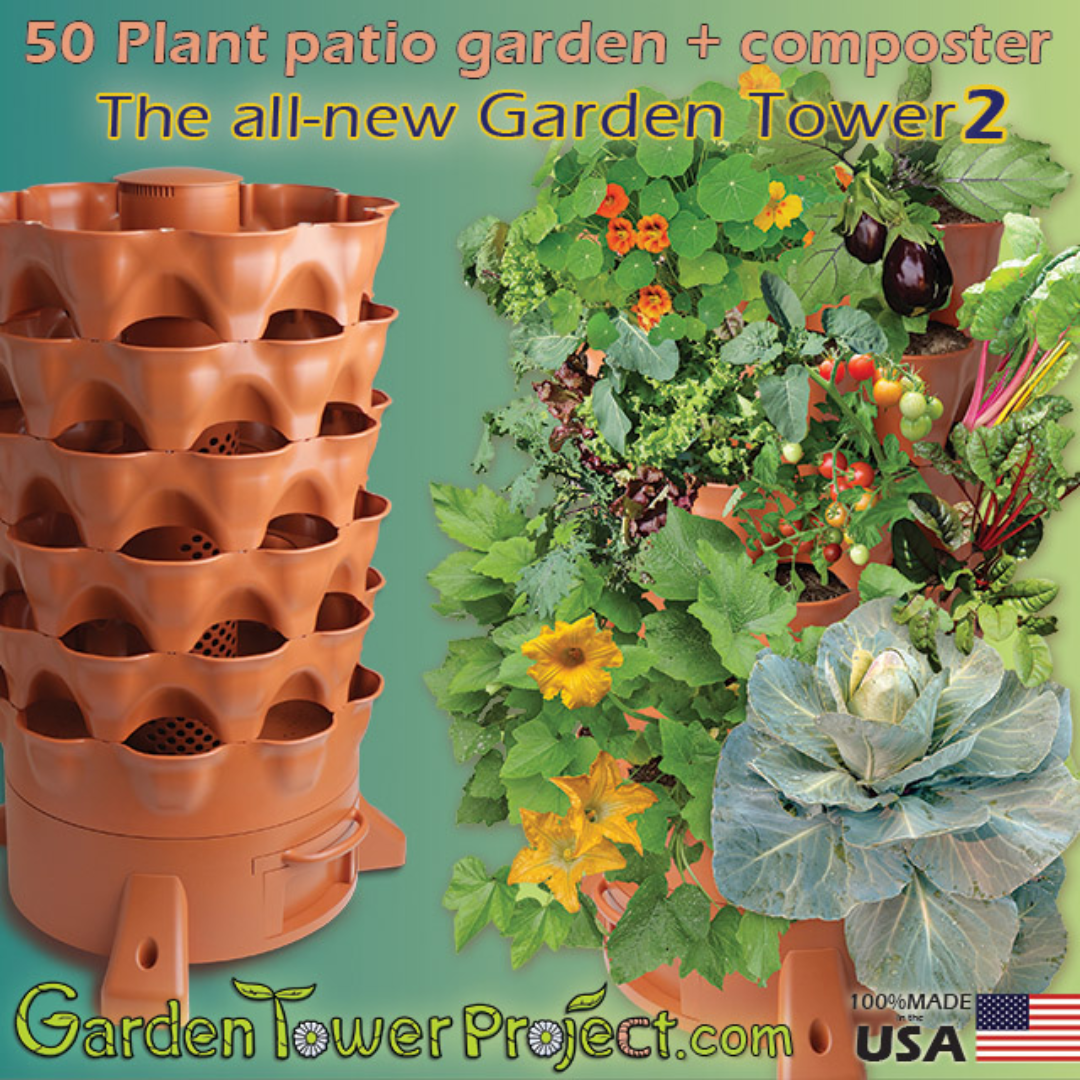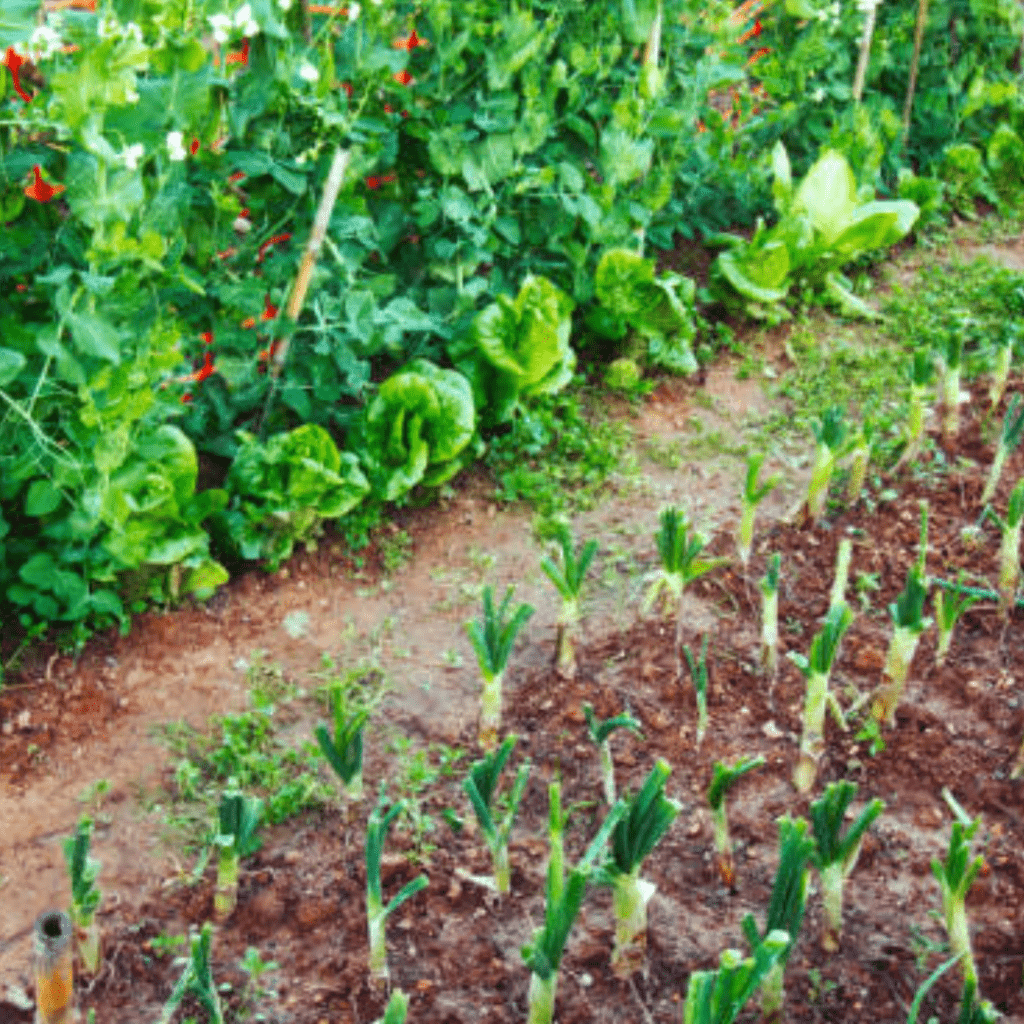Not everyone has the luxury of a spacious backyard, but that doesn’t mean you can’t grow your own fresh, organic food. Whether you live in an apartment, RV, or tiny home, innovative solutions like vertical gardening make it possible to enjoy a thriving garden, even indoors. In this guide, I’ll show you how to grow food in small spaces and how the Garden Tower Project can turn your patio, balcony, or kitchen corner into a productive mini-farm.
Why You Should Grow Your Own Food
1. Control What Goes Into Your Food
When you grow your own food, you decide exactly what’s used in the process—from the soil to the seeds to the water. There’s no need to worry about harmful pesticides, herbicides, or genetically modified organisms (GMOs). You can choose organic methods, heirloom seeds, and natural fertilizers that align with your values and health goals. The result? Fresh, clean produce that you can feel good about feeding your family.
2. Save Money on Groceries
A productive garden can slash your grocery bill, especially when it comes to high-turnover items like lettuce, herbs, tomatoes, cucumbers, and peppers. Once your system is established, you’ll enjoy a continuous harvest of food you’d otherwise have to buy weekly. Over time, the savings really add up—especially if you preserve the surplus through canning, drying, or freezing. Plus, you skip the rising prices at the store and always have something fresh on hand.
3. Build Food Security
Supply chain disruptions and economic uncertainty can be overwhelming. Growing your own food gives you a sense of control and independence. Whether you’re preparing for emergencies or just want a backup plan, a home garden is a powerful form of food insurance. It helps you become more resilient in the face of inflation, shortages, or crises, and teaches valuable skills that connect you to the land and your food source.
This is a pinnable post. Tap or hover over any image in this post to pin to your Pinterest Boards.
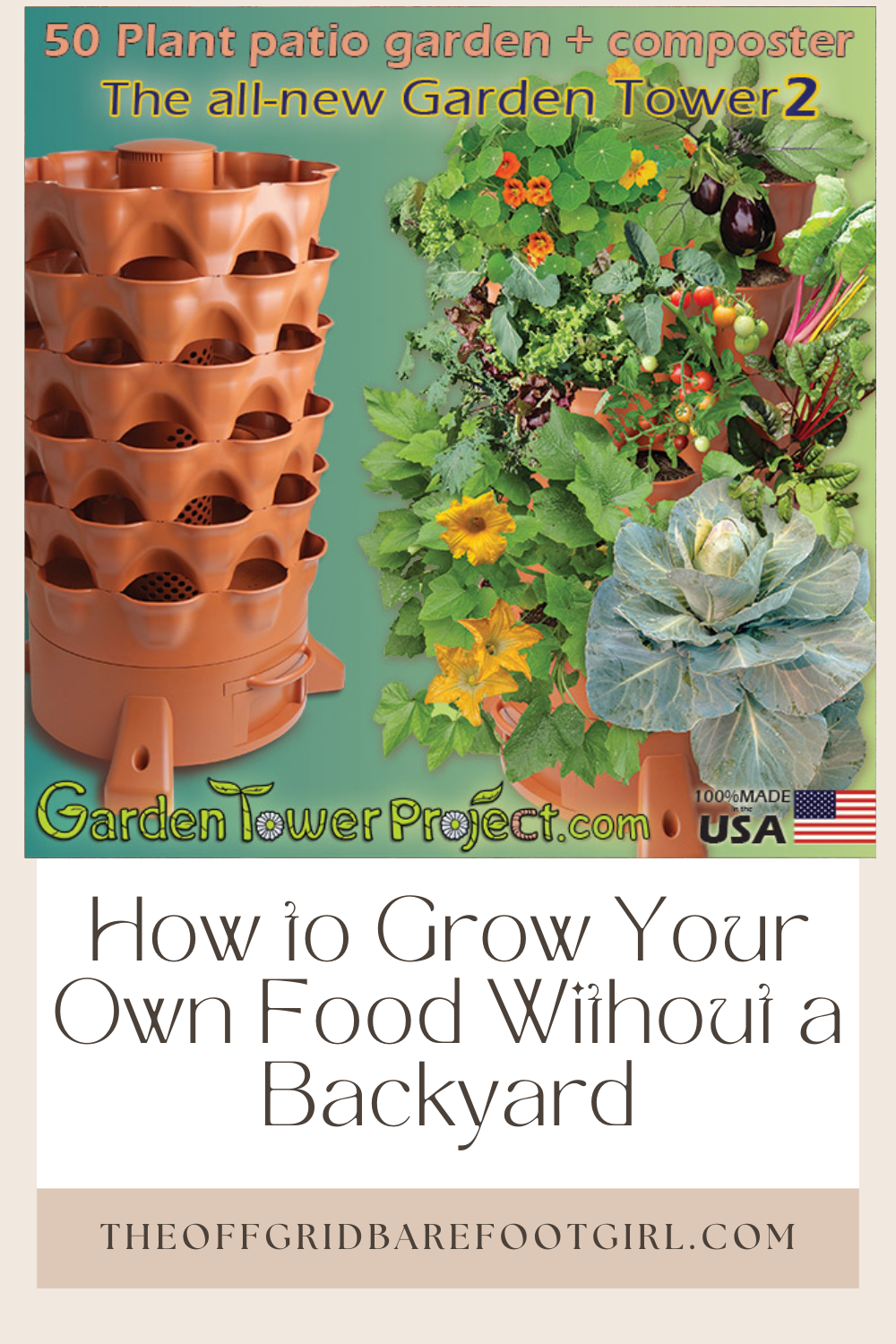
Creative Solutions for Growing Food Without Land
1. Vertical Gardening Systems
If you’re short on space, vertical gardening is a total game-changer. Instead of spreading out, you grow up, maximizing every inch of your space. Systems like the Garden Tower 2 are perfect for small patios, balconies, or even indoor areas with good light. With room to grow 50 or more plants in just 4 square feet, it’s ideal for lettuce, herbs, strawberries, and even root veggies like carrots. One of the coolest features? It includes a built-in composting core, so you can recycle your kitchen scraps and nourish your plants naturally. It’s a space-saving, eco-friendly food-growing powerhouse!
2. Container Gardening
Container gardening is one of the most versatile and beginner-friendly ways to grow your own food, especially if you’re working with a balcony, front steps, or even just a sunny window. Pots and planters come in all shapes and sizes, making it easy to tuck a tomato plant by the porch, grow kale in a big pot by the driveway, or line a windowsill with fragrant herbs. Plants like basil, chives, mint, peppers, green onions, and even dwarf tomatoes thrive in containers when given good soil, sunlight, and proper watering. Best of all, containers are portable, letting you move them around as the seasons or sun exposure change.
3. Grow Bags and Fabric Pots
Grow bags are soft, breathable containers that provide excellent drainage and airflow to your plant roots, helping prevent overwatering and promoting healthy growth. They’re perfect for root crops like potatoes, carrots, radishes, and beets, which need deep, loose soil to develop properly. Lightweight and collapsible, these bags are easy to move, making it simple to follow the sunlight or bring them indoors during chilly weather. They also store flat when not in use, making them an ideal solution for seasonal gardeners or small-space growers looking for flexibility.
4. Hanging Planters
Don’t overlook the vertical space above you—hanging planters make use of ceilings, overhangs, railings, or even wall brackets to grow compact food crops like strawberries, lettuce, spinach, and herbs. These planters free up floor space while still giving your plants the sunlight and airflow they need. Hanging baskets also add beauty and function to porches, patios, and balconies. You can even rotate them seasonally or grow trailing plants like cherry tomatoes for a decorative and productive display. It’s a smart way to turn unused space into a thriving mini-garden.
Using the Garden Tower Project to Grow 50+ Plants in 4 Square Feet
The Garden Tower Project offers a patented vertical container garden with 50 planting pockets. It also features a built-in vermicomposting tube in the center, meaning your kitchen scraps can feed your garden right inside the tower. Here’s why it’s a game changer:
- All-in-one garden and composter
- Great for patios, balconies, and rooftops
- Perfect for beginners and seasoned growers
- Rotates 360° for easy access to plants
- Made in the USA with food-grade, UV-stable plastic
👉 Check out the Garden Tower Project
Grow Indoors with Lights and Hydroponics
If you don’t have outdoor access at all, try growing indoors. Pair a Garden Tower with a grow light or set up a hydroponic system for leafy greens and herbs.
- LED grow lights make year-round gardening possible.
- Hydroponic kits allow you to grow food using nutrient-rich water instead of soil.
- Use sunny windows for smaller container gardens.
Balcony and Rooftop Gardens
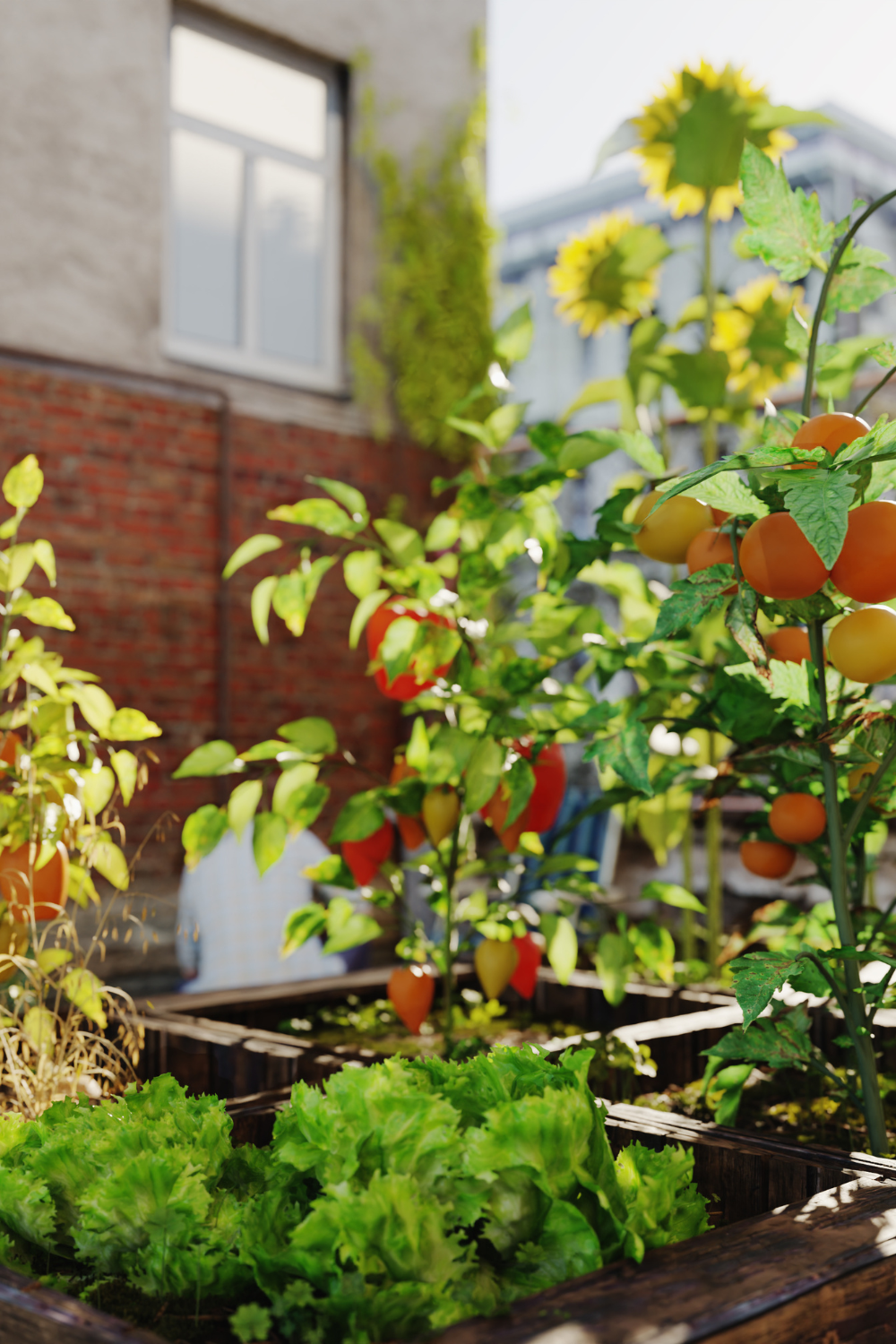
Small outdoor spaces can be transformed into lush mini-farms. Here’s how to make it work:
1. Maximize Sunlight
Sunlight is essential for healthy, productive plants. Most vegetables require at least 6–8 hours of direct sunlight daily. When gardening without a backyard, you’ll need to get creative about where you place your plants. South-facing balconies, patios, or even sunny windowsills can become productive growing zones. If you’re indoors or in a shaded area, consider investing in grow lights to supplement natural sunlight. Observe how light moves across your space during the day and place your containers, garden tower, or grow bags where they’ll receive the most consistent exposure.
2. Use Trellises
Trellises are a fantastic tool for small-space gardening. They allow vining and climbing crops like cucumbers, peas, pole beans, and even some squash varieties to grow upward rather than sprawling out. This saves precious ground space and also keeps fruits cleaner and more accessible. Trellises can be placed along balcony railings, mounted to walls, or added to containers. You can DIY them from wooden stakes, repurposed items, or buy premade garden trellises. Bonus: they also provide a touch of vertical charm to your garden space!
3. Combine Utility with Beauty
Just because you’re gardening for food doesn’t mean you have to sacrifice beauty. In fact, mixing edible plants with flowers creates a more attractive and pollinator-friendly environment. Marigolds, nasturtiums, and calendula not only add vibrant color but also deter pests naturally. Interplanting flowers with leafy greens, cherry tomatoes, and herbs creates a lush, abundant look that nourishes both your body and soul. This blend of functionality and aesthetics makes your small-space garden a place you’ll love spending time in, not just a food source.
If you’re inspired by the idea of blending beauty and function in your garden, be sure to check out my post on foodscaping. It’s all about transforming traditional landscaping into edible, productive spaces—without sacrificing curb appeal. Whether you’re working with a front yard, a flower bed, or even a patio, foodscaping shows you how to creatively integrate fruits, vegetables, and herbs right alongside your ornamentals. It’s a smart, sustainable way to grow more of your own food while keeping your space visually stunning.
How to Create a Stunning Foodscaping Design!
Composting Without a Yard
Even without a compost pile, you can still recycle food scraps to nourish your garden.
- Use the built-in compost tube in the Garden Tower
- Worm composting (vermiculture) works well indoors
- Countertop composters can turn scraps into usable soil in days
Conclusion: Start Growing Today—No Yard Required!
You don’t need land to start a garden. With creative solutions like vertical towers, containers, and indoor setups, anyone can grow their own food and take control of their health and food security. The Garden Tower Project is one of the most effective tools I’ve found to support small-space gardeners—perfect for homesteaders, preppers, and apartment dwellers alike.
👉 Start your vertical garden today with the Garden Tower Project and take one barefoot step closer to self-sufficiency!
Resources: Here are some helpful resources for further information.
- Growing Your Own Food: Resources and Tools – By FoodPrint
- How to Grow Everything You Eat – By Cairncrest Farm
- How to Start a Garden Even If You Don’t Have a Yard – By Bon Appétit
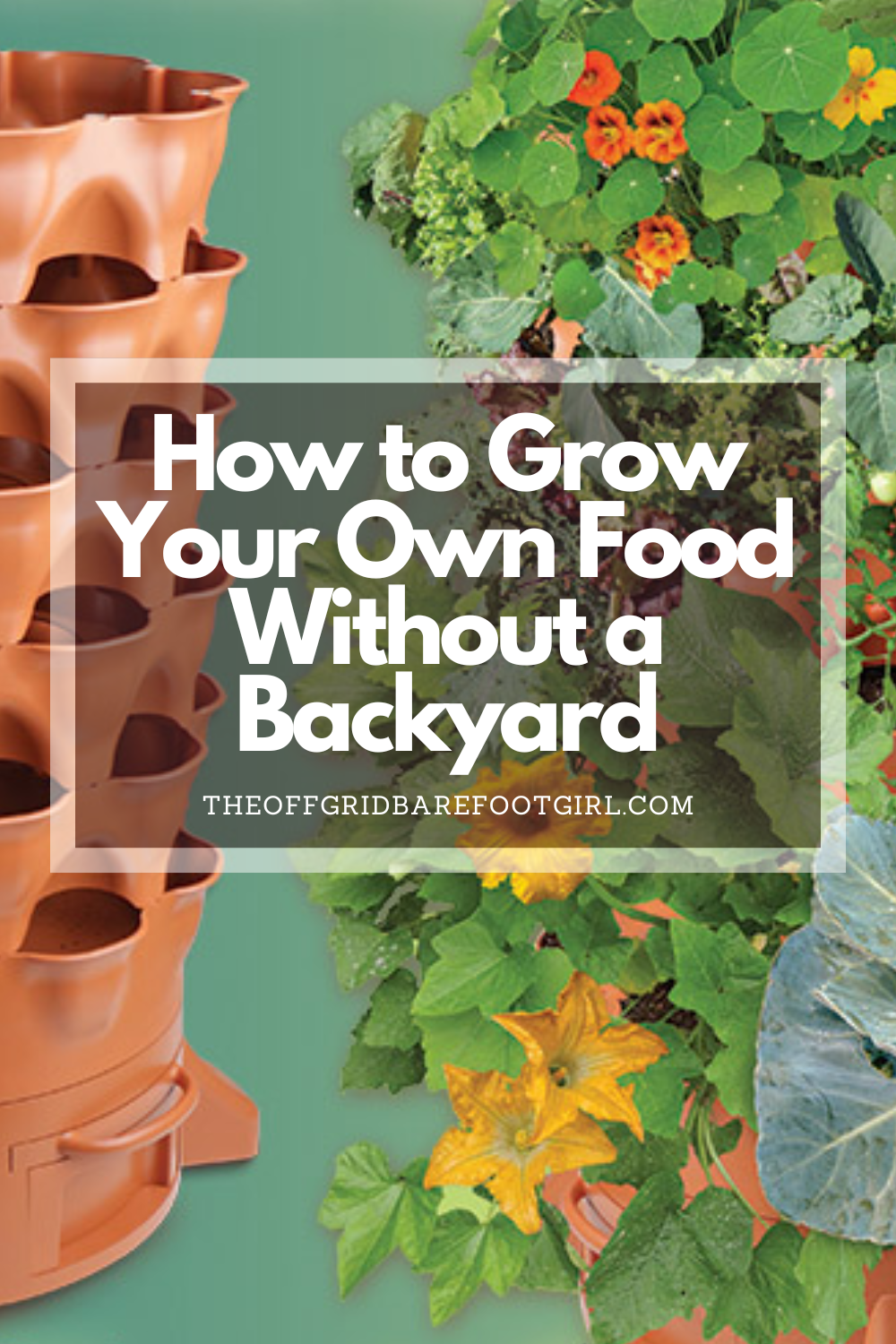
Frequently Asked Questions
1. What foods grow best in a Garden Tower?
Leafy greens, herbs, strawberries, radishes, tomatoes, and peppers all grow beautifully in a Garden Tower.
2. Can I use a Garden Tower indoors?
Yes, with a good grow light and proper drainage setup, you can successfully use the Garden Tower indoors.
3. How do I compost without a backyard?
You can use the built-in compost tube in the Garden Tower or set up a vermicomposting bin with red wigglers.
4. Is it worth the investment?
Absolutely. With over 50 planting spots and built-in composting, the Garden Tower pays for itself in food savings and sustainability.
Summary
I hope I have inspired you to plant your garden with these tips and products.
If you were encouraged by this post, I invite you to check out my FREE Printables Page for fun free printables, planners, and charts.
ENTER MY FREE Printables Page HERE
Here are some more of my gardening inspiration posts to check out!
My Best Spring Garden Posts in One Spot!
Spring Garden Soil Prep: How to Improve Your Soil
Seed Starting Mix 101: Everything You Need to Know!
How to Plan a 200 Sq. Ft. Vegetable Garden Layout
How I Easily Start My Seeds Without Expensive Grow Lights!
How to Create a Smart Garden: Tech Meets Nature!
The Best Cheap Raised Vegetable Garden Beds
How to Grow Artichokes: Plant Once and Harvest for 5 Years!
The Best 8 Fast-Growing Vegetables In Just 45 Days!
From Snow to Sow: Plan Your Spring Garden Now!
11 Fun Ways to Brighten Your Spring Garden with Personality
Top 10 Spring Garden Crops to Harvest in 30 Days and Eat Now!
The Best Survival Crops for Caloric Survival
My Victory Garden: What I Learned from 5+ Years
Why Every Family Should Have a Victory Garden in Their Backyard Now!
The Best Perennials for a Long-Term Survival Garden
The Best Essential Oils for Plants That Repel Garden Bugs
More Gardening Projects!
How to Grow Green Garden Peas: Perfect Plump Peas!
Hugelkultur: Does This Epic Pioneering Method Actually Work?
9 Ways to Celebrate Earthing Day in Your Garden!
Gardening Indoors: Secrets of Growing Your Food Inside!
How to DIY a Milk Jug Drip Irrigation System!
Why Cedar Mulch Is The Perfect Natural Weed Barrier
Gardening Projects
Onions: How to Grow Onions for Storage
Peas: How to Grow Garden Peas for a Bumper Crop
Carrots: How to Grow Carrots for a Bountiful Harvest
Prep Your Garden for Spring Planting with These Expert Tips!
How to Grow a Prepper Garden to Survive and Thrive
The Best Garden Tools You Need for a Productive Season
Fastest Growing Vegetables for Your Survival Garden
How to Grow Marigolds As Pest Control In Your Vegetable Garden
Must-Have Tools for a Successful Balcony Vegetable Garden
How to Effectively Combat Powdery Mildew in Your Garden
The Best Tips for Organic Gardening
How to Release Ladybugs In Your Garden for Organic Pest Control
The Best Garden Snail Control Strategies
The Best Spring Vegetables to Grow in Your Garden
Seed Starter Mix: How To Make Your Organic Seed Starter Mix At Home
How to Grow a Productive Canning Garden
How to Plant and Grow a Salsa Garden
Easiest Heirloom Vegetable Seeds to Grow Now
How to Use the Hand Twist Claw Tiller: Tackling Tough Soil
More Fun Gardening Posts to Check Out!
Planning Your Garden: How to Plan a Vegetable Garden: Expert Green Thumb Tips!
Winterizing the Garden: How to Winterize Your Vegetable Garden: Step-by-Step Checklist
Mulching the Garden: How to Make Leaf Litter Mulch
Grow a Pumpkin Patch: How to Grow a Pumpkin Patch in Your Backyard
How to Grow a Fall Garden: 9 Best Fall Crops
Clever Ways to Incorporate Indoor Composting into Your Home
How to Start Composting for the Garden: A Step-by-Step Guide
The Ultimate Guide to Composting in Your Suburban Backyard
Why I Built A Survival Garden in My Backyard
16 Best Medicinal Herbs to Grow in Your Garden Now
Blessings,
The Off Grid Barefoot Girl

